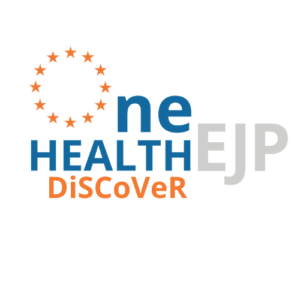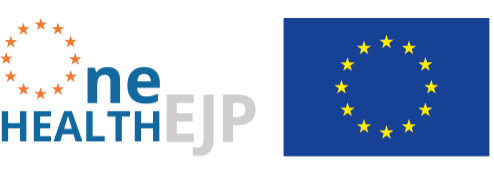Waterloo Road, London Borough of Lambeth, England, United Kingdom
Addlestone, England, United Kingdom
Oak Park Road, Athy Municipal District (2019), Leinster, Ireland
Max-Dohrn-Straße 8, Berlin, Berlin, Germany
14 Rue Pierre et Marie Curie, Maisons-Alfort, Île-de-France, France
Houtribweg 39, Lelystad, Flevoland, The Netherlands
Antonie van Leeuwenhoeklaan 9, De Bilt, Utrecht, The Netherlands
Avenida da República 2780, Oeiras e São Julião da Barra, Paço de Arcos e Caxias, Área Metropolitana de Lisboa, Portugal
Rua Rio Ave 1600, Carnide, Área Metropolitana de Lisboa, Portugal
Avenida Puerta de Hierro, Madrid, Comunidad de Madrid, Spain
Viale Regina Elena, Rome, Lazio, Italy
Hudcova 296, Brno, Jihovýchod, Czech Republic
Aleja Partyzantów 57, Puławy, województwo lubelskie, Poland
Lovisenberggata 6, Oslo, Oslo, Norway
Ullevålsveien 68, Oslo, Oslo, Norway
Uppsala, Uppsala län, Sweden
Viale Regina Elena, Rome, Lazio, Italy
Anker Engelunds Vej 1, Stampen, Region Hovedstaden, Denmark

The Project #DISCOVER
| Start: | 1 January 2020 |
| Duration: | 2.5 Years |
| Domain: | Foodborne Zoonoses |
| Keywords: | Source attribution, risk assessment, epidemiology, foodborne |
| Contact: | Tine Hald (DTU) |
DiSCoVer: Discovering the sources of Salmonella, Campylobacter, VTEC and antimicrobial resistance
This project brought together experts from different disciplines (microbiology, bioinformatics and epidemiology) and sectors (veterinary science, food safety, public health and environmental health) from 19 institutions in 13 European countries into a unique consortium to address the challenges of source attribution in an interdisciplinary manner. As there is no gold standard for source attribution, we took a comprehensive approach to applying several different methodologies and models in a comparative fashion.
The project has mapped the existing knowledge gaps. The work started by mapping existing data and establishing a joint data-sharing platform for the project partners. Data was included from a broad range of reservoirs and sources, including those that are not traditionally part of existing monitoring and surveillance activities, e.g. pets (incl. reptiles), wildlife, and environmental sources.
The work also focused on cataloging, evaluating and advancing existing methods for source attribution and developing methods for the critical assessment of source attribution models. Novel approaches for source attribution were explored, developed and assessed. Investigation of existing approaches included microbial subtyping, meta-analysis of case-control studies and outbreak data, and risk-assessment-based methods. The source attribution estimates focused on three pathogens (Salmonella, Campylobacter, and STEC) and AMR.
Project Outputs and Outcomes
DiSCoVeR project has collected comprehensive and standardised datasets for the target pathogens (Salmonella (n=145,000 isolates; s=4,185 sequences), Campylobacter (n=5,361 isolates/sequences), STEC (n=7,552 isolates; s=3,418), and ESBL (n=10,674 isolates)) and made the phenotypic and metadata open accessible through Zenodo. The sequence data (WGS) will be available at ENA through an umbrella project. We believe that these multi-country datasets compiled of isolate data and sequences from humans and various animal and food sources are quite unique and could be analysed by other methods and by other researchers to provide novel insights to the epidemiology of foodborne hazards in EU MS.
DiSCoVeR project has made a critical and systematic assessment of existing source attribution models and developed new phenotypic and genomic-based attribution models for pathogen and antimicrobial resistance.
Based on the results, DiSCoVeR project has provided recommendations on the translation of results from source attribution models in to actions, emphasising that Salmonella in pigs and pork and Campylobacter in broilers and chicken meat stand out as areas, where targeted future control and intervention could be implemented to reduce the burden of human infections significantly. The project has also evaluated current surveillance and control activities in a One Health context and made recommendations for improvement by seeking out (further) collaboration and identifying possible surveillance synergies within the environmental/ecosystem pillar of One Health, as surveillance and research focus currently is very much oriented towards human health and food-producing animals. Most of these recommendations are considered relevant for risk managers/decision makers such as ECDC and EFSA, national food, veterinary, and environmental authorities, and farmer and consumer organisations. These recommendations have been presented to and discussed with stakeholders, including ECDC, EFSA, EURLs, and the EC.
Finally, DiSCoVeR project has evaluated transfer of the source attribution approaches as an opportunity to strengthen the institutional capacity building for One Health by promoting increased network-collaboration and training within integrated surveillance, source attribution approaches, burden of disease methodologies, risk assessment, and system thinking.
Project Assets
Perestrelo, S., Amaro, A., Brouwer, M.S.M., Clemente, L., Ribeiro Duarte, A.S., Kaesbohrer, A., Karpíšková, R., Lopez-Chavarrias, V., Morris, D., Prendergast, D., Pista, A., Silveira, L., Skarżyńska, M., Slowey, R., Veldman, K.T., Zając, M., Burgess, C., Alvarez, J. (2023). Building an International One Health Strain Level Database to Characterise the Epidemiology of AMR Threats: ESBL—AmpC Producing E. coli as An Example—Challenges and Perspectives. Antibiotics. 12(3), 552. DOI: https://doi.org/10.3390/antibiotics12030552 Supplementary data S2 for this publication available on Zenodo.
Batista, R., Saraiva, M., Lopes, T., Silveira, L., Coelho, A., Furtado, R., Castro, R., Correia, C. B., Rodrigues, D., Henriques, P., Lóio, S., Soeiro, V., da Costa P. M., Oleastro, M., Pista, A. (2023). Genotypic and Phenotypic Characterization of Pathogenic Escherichia coli, Salmonella spp., and Campylobacter spp., in Free-Living Birds in Mainland Portugal. International Journal of Environmental Research and Public Health. 20(1), 223. DOI: https://doi.org/10.3390/ijerph20010223
de Freitas Costa, E., Hagenaars, T. J., Dame-Korevaar, A., Brouwer, M. S. M. & de Vos, C. J. (2022). Multidirectional dynamic model for the spread of extended-spectrum-β-lactamase-producing Escherichia coli in the Netherlands. Microbial Risk Analysis. 22, 100230. DOI: https://doi.org/10.1016/j.mran.2022.100230
Chanamé Pinedo, L., Mughini-Gras, L., Franz, E., Hald, T., Pires, S. M. (2022). Sources and trends of human salmonellosis in Europe, 2015–2019: An analysis of outbreak data. International Journal of Food Microbiology. 379, 109850. DOI: https://doi.org/10.1016/j.ijfoodmicro.2022.109850
Pista, A., Silveira, L., Ribeiro, S., Fontes, M., Castro, R., Coelho, A., Furtado, R., Lopes, T., Maia, C., Mixão, V., Borges, V., Sá, A., Soeiro, V., Correia, C.B., Gomes, J. P., Saraiva, M., Oleastro, M., Batista, R. (2022). Pathogenic Escherichia coli, Salmonella spp. and Campylobacter spp. in Two Natural Conservation Centers of Wildlife in Portugal: Genotypic and Phenotypic Characterization. Microorganisms. 10(11), 2132. DOI: https://doi.org/10.3390/microorganisms10112132
Johannessen, G. S., Antony-Samy, J. K., Bøe, C. A., Fiskebeck, E. Z., Lagesen, K., Madslien, K., Våge, J., Økland, M. & Sekse, C. (2022). Occurrence of Shiga toxin-producing Escherichia coli in wild ruminants in Norway. Poster presentation for One Health EJP Annual Scientific Meeting. Orvieto, Italy. 11-13th April 2022. DOI: https://doi.org/10.5281/zenodo.7399760
Perestrelo, S., Correia Carreira, G., Valentin, L., Fischer, J., Pfeifer, Y., Werner, G., Schmiedel, J., Falgenhauer, L., Imirzalioglu, C., Chakraborty, T. & Käsbohrer, A. (2022). Comparison of approaches for source attribution of ESBL-producing Escherichia coli in Germany. PLOS ONE, 17(7), e0271317. DOI: https://doi.org/10.1371/journal.pone.0271317
Lopez-Chavarrias, V., Dieguez Roda, B., Torre Fuentes, L., Ugarte-Ruiz, M., Saez, J. L., Moreno, M. A., Dominguez, L. & Alvarez, J. (2022). Mapping antimicrobial resistance markers for aminoglycosides and macrolides in Campylobacter in Spanish livestock. Abstract for oral presentation to be delivered at 16th International Symposium of Veterinary Epidemiology and Economics. Halifax, Nova Scotia, Canada. 7th August 2022. DOI: https://doi.org/10.5281/zenodo.6637724
Ribeiro, S., Fontes, M., Lopes, I., Silveira, L. & Pista, A. (2022). Colistin Resistance Genes in Escherichia coli and Salmonella spp. Isolates from Pets, Wild and Food-producing Animals in Portugal, 2019-2021. Poster presentation for 32nd European Congress of Clinical Microbiology & Infectious Diseases. Lisbon, Portugal. 23-26th April 2022. DOI: https://doi.org/10.5281/zenodo.6645500
Lopez-Chavarrias, V., Wieczorek, K., Osek, J., Dieguez Roda, B., Torre Fuentes, L., Ugarte-Ruiz, M., Moreno, M. A., Dominguez, L., & Alvarez, J. (2022). Epidemiological comparison of Campylobacter jejuni isolates from Poland and Spain combining MLST and antimicrobial resistance whole genome analyses. Poster presentation for OHEJP ASM 2022. Orvieto, Italy. 11-13th April 2022. DOI: https://doi.org/10.5281/zenodo.6637353
, , , , , , & (2022). A statistical modelling approach for source attribution meta-analysis of sporadic infection with foodborne pathogens. Zoonoses and Public Health, 00, 1– 12. DOI: https://doi.org/10.1111/zph.12937
Lopez-Chavarrias, V., Ugarte-Ruiz, M., Barcena, C., Olarra, A., Garcia, M., Saez, JL., de Frutos, C., Serrano, T., Perez, I., Moreno, MA., Dominguez, L., Alvarez, J. (2021). Monitoring of Antimicrobial Resistance to Aminoglycosides and Macrolides in Campylobacter coli and Campylobacter jejuni From Healthy Livestock in Spain (2002–2018). Frontiers in Microbiology. 12, 689262. DOI: https://doi.org/10.3389/fmicb.2021.689262



